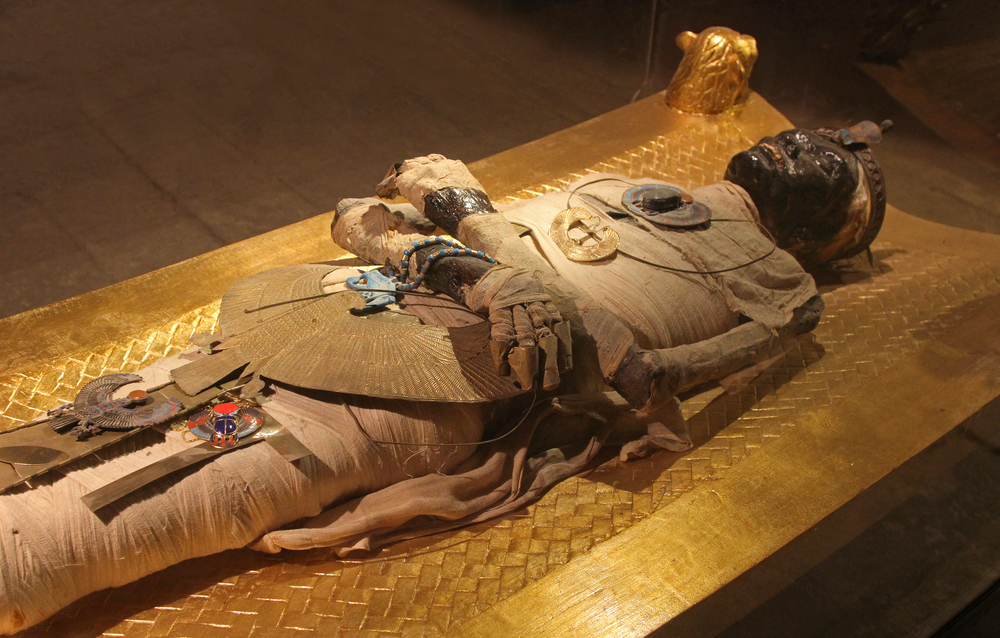Human death customs vary greatly across the planet, but the preservation of bodies is in many cultures. Seeing as the bodies of animals can undergo the taxidermy process and be preserved indefinitely, it’s only reasonable to wonder if the same can be done with human bodies.
Yes, you can taxidermy a human. But that’s speaking technically. The ability to taxidermy a body legally and by the following precedent is a much more complicated matter, and much of it depends on the circumstances and location.
Table of Contents
What exactly is taxidermy?
In order to understand how and when a human body might undergo taxidermy, it’s important to know what the actual process consists of. Unlike embalming or other body preservation techniques, the goal of taxidermy is to preserve the hide (skin) of an animal, hair, and head, rather than the body as a whole.
By doing so, the animal (or at least a portion of it) can then be displayed in a lifelike manner.

Because of this, the process of taxidermy is relatively simple compared to embalming methods. The body is laid out and measured for proportions, after which the skin is removed in (preferably) one piece.
The skin is then set aside and dried, often on borax or cedar dust to expedite the process.
When the skin is ready, the taxidermist will carefully stuff it with cotton and sew it up as they go. They may even use a mannequin or internal frame for anatomical precision, as well as add life-like glass eyes to complete the process.
When done correctly, the skin will thoroughly resemble the animal in its living form and proportions.
How did taxidermy get its start?
The exact origins of taxidermy are unknown since it has been practiced by cultures around the world for centuries. That said, the earliest practices date back to the Ancient Egyptians as early as 2200 B.C., who used similar methods to preserve the pets of royalty for burial with their owners.
Many human bodies at this time underwent mummification, which was somewhat similar to taxidermy as it involved drying and stuffing, except the skin was not separated from the body and most internal organs were left intact.
Modern taxidermy as we know it emerged in the 1500s, with various naturalists exploring the practice as a means of animal study. Taxidermy grew in popularity throughout the next few centuries as more people began to travel and wanted mementos of hunting and of the creatures they saw in nature.
Taxidermy exploded in popularity in the Victorian era, and many of the animal pieces from then still exist today in museums.
The practice is no longer as widespread in the modern age as it was over 100 years ago, but professional taxidermy shops exist in most countries. However, licensed taxidermists work with animals only and are not part of human mortuary services.
Is human taxidermy legal?

People sometimes joke about undergoing taxidermy after death or “stuffing” deceased relatives to put on display at home. While this kind of morbid humor can help make death feel more approachable for some, the truth is that the process cannot legally be done in modern times.
At least, it can’t in the same sense as an animal’s body.
The United States has strict laws against human taxidermy, as do most other countries. Even in areas where the practice may not explicitly be illegal, it is culturally frowned upon and may result in legal ramifications if discovered.
Furthermore, even animal taxidermy requires various permits and licensing, which varies based on how the body was acquired and what kind of creature it is.
Nevertheless, modern laws are not representative of the past. Human taxidermy has been performed in earlier years, which is why we know it is feasible rather than just theoretically possible.
Why is human taxidermy illegal?
There are various reasons why human taxidermy is illegal around the world. According to a taxidermist statement from the Morbid Anatomy in Brooklyn, NY, one of these is because human skin discolors greatly after death and as it dries.
Because the general point of taxidermy is to preserve something as it appeared during life, this makes a human body an un-ideal candidate.
It’s also worth noting that current taxidermy laws make it very difficult to dispose of or even relocate many animal taxidermy pieces. Certain birds and mammals require special licenses to display.
If human taxidermy were legal, it’s reasonable to think that these laws would be even more complex and cumbersome to navigate.
But logistics aside, the illegality of human taxidermy largely comes down to public perception. Human skin preservation has been largely associated with certain serial killers over the years, and other cases have also not involved the consent of the deceased.
As one Australian taxidermist relayed to ABC News in Queensland in 2016, he has turned down requests to taxidermy human skin simply because it is “too gruesome.”
Can you request to be “taxidermied” in your will?

Despite the legal challenges, it may seem like you can request anything you like in your living will or estate plan. However, these documents still need to abide by the law.
If something illegal is requested, it may not be notarized, or the request will simply not be adhered to later on.
That said, the human body is not considered property and therefore should not be included in your will in the first place. While burial and body preservation preferences may be stated, it is usually better to go over these final arrangements through other means.
Either way, stipulating that your body undergoes taxidermy isn’t likely to make it actually happen.
Can you legally keep the remains of loved ones on display?
Just as you cannot have your own body undergo taxidermy, you cannot subject those of your loved ones either. It’s also worth noting that it is also nearly impossible to keep any of their remains on display in your home unless, of course, they consist of ashes in an urn.
While the United States doesn’t have laws in place that prohibit the sale, movement, or display of human body parts like skulls (except in the case of Native American remains), funeral homes and mortuaries are subject to corpse desecration laws. In a nutshell, these laws require them to prepare human remains only for legal burial or display purposes, which mostly only includes a casket or an urn.
Morticians are also legally unable to dismember a body.
Has human taxidermy been practiced in history?

Not counting ancient mummies that underwent similar procedures, there have been few historical cases of human bodies undergoing taxidermy. Perhaps the most notable of all was the “Negro of Banyoles,” a very controversial taxidermy of a San man from early 1800s Africa.
Subject to taxidermy after his death by two French naturalists, his remains proceeded to be on display at France’s Darder Museum until the year 2000, when they were finally sent to Botswana for proper burial.
There are also several known cases of individuals who worked as circus “freaks” in the Victorian and pre-Victorian eras whose bodies became the subject of taxidermy. Unlikely to have consented themselves, these individuals were likely the victims of showrunners who wanted to keep profiting from their appearances after their deaths.
It’s also worth pointing out that popular culture often refers to the body of Russian communist leader Vladimir Lenin as being a form of taxidermy. While the body was notoriously very well-preserved for years, it underwent an advanced form of embalming rather than taxidermy.
Are there examples of human taxidermy in pop culture?
Just because human taxidermy has a sordid past and is currently widely illegal does not mean it’s off-limits for the pop culture world. While not overly common, the concept of human taxidermy has been featured in an array of movies, including:

- Planet of the Apes (1968)
- The Embalmer (2002)
- Taxidermia (2006)
- The Taxidermist (2018)
- The House That Jack Built (2018)
What’s the closest legal option to human taxidermy?
There have been various exhibits in recent decades that feature real human bodies on display (two of the best-known examples are Body Worlds and Bodyworks). However, it’s important to know that these are not taxidermy, but the products of a process called plastination.
This process of body preservation carefully replaces water and fat with a form of clear plastic, allowing tissues to retain much of the same colors and forms as they did in life.

















